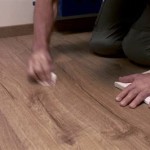Snap Together Outdoor Flooring Tiles: A Comprehensive Guide
Snap-together outdoor flooring tiles represent a versatile and increasingly popular solution for homeowners and renters seeking to enhance their outdoor living spaces. These tiles offer a readily installable and often aesthetically pleasing alternative to traditional decking, concrete patios, or bare ground. Their modular design allows for adaptability and customization, enabling users to transform balconies, patios, decks, and even poolside areas with relative ease.
This article will delve into the various facets of snap-together outdoor flooring tiles, exploring their material composition, installation process, advantages, disadvantages, maintenance requirements, and factors to consider when selecting the optimal tiles for a specific application. The aim is to provide a comprehensive understanding of this flooring option, enabling informed decision-making regarding its suitability for diverse outdoor spaces.
Material Composition and Types
The functionality and longevity of snap-together outdoor flooring tiles are intimately linked to their material composition. These tiles are manufactured from a range of materials, each possessing distinct properties that influence their durability, aesthetics, and resistance to environmental factors. Understanding these material differences is crucial for selecting tiles appropriate for the intended use and climate.
Plastic (Polypropylene) Tiles: Polypropylene tiles are a common and cost-effective choice. This type of plastic offers good resistance to moisture, UV radiation, and staining. Polypropylene is also relatively lightweight, making these tiles easy to handle and install. However, they may not possess the same aesthetic appeal as natural materials and can become brittle over time, particularly in harsh weather conditions. They generally offer satisfactory durability for moderate use and are often a suitable choice for balconies or less frequently used patio areas.
Composite Tiles: Composite tiles are typically constructed from a blend of recycled plastic and wood fibers. This combination aims to provide a balance between the durability of plastic and the natural appearance of wood. Composite tiles are generally more resistant to fading, warping, and insect damage compared to natural wood. They also require less maintenance than wood decks, as they do not need to be stained or sealed regularly. The exact composition of the composite material can vary significantly among manufacturers, impacting the tiles' overall performance and lifespan. Higher-quality composites typically contain a higher percentage of plastic, enhancing their resistance to moisture and decay.
Wood Tiles: Wood tiles offer a natural and aesthetically pleasing appearance. These tiles are typically made from hardwoods such as teak, cedar, or redwood, which are naturally resistant to decay and insect infestation. However, wood tiles require regular maintenance, including cleaning, staining, and sealing, to protect them from the elements and maintain their appearance. Without proper upkeep, wood tiles can fade, warp, crack, or splinter. Wood tiles are a good choice for those seeking a natural look and are willing to invest in the necessary maintenance.
Stone Tiles: Stone tiles offer a durable and aesthetically pleasing option for outdoor flooring. These tiles are typically made from materials such as slate, travertine, or porcelain. Stone tiles are highly resistant to weathering, staining, and wear. They also provide a slip-resistant surface, making them a safe option for areas around pools or in wet climates. Stone tiles can be heavier and more expensive than other types of snap-together tiles, and installation may require more effort due to their weight.
Rubber Tiles: Rubber tiles are typically made from recycled rubber and offer excellent cushioning and slip-resistance. These tiles are a popular choice for playgrounds, gyms, and other areas where safety is a primary concern. Rubber tiles are also durable and easy to clean. However, they may not be as aesthetically pleasing as other types of tiles and can retain heat in direct sunlight.
Installation Process and Considerations
The snap-together design is the defining characteristic of these flooring tiles, facilitating a relatively straightforward installation process. However, proper preparation and adherence to best practices are essential for achieving a durable and aesthetically pleasing result. The installation process typically involves several key steps:
Site Preparation: Before beginning installation, the underlying surface must be properly prepared. This typically involves cleaning the area to remove debris, leveling the surface to ensure a smooth and even foundation, and potentially adding a weed barrier to prevent vegetation growth from penetrating the tiles. For uneven surfaces, a layer of leveling sand or gravel may be required.
Tile Layout: Before snapping the tiles together, it is advisable to plan the layout and determine the placement of whole tiles and any necessary cuts. This will help minimize waste and ensure a visually appealing pattern. Consider the orientation of the tiles and the direction of the connecting tabs to ensure that the pattern aligns correctly. When working around obstacles such as posts or corners, accurate measurements and planning are crucial.
Connecting the Tiles: The snap-together mechanism typically involves interlocking edges or tabs that securely connect adjacent tiles. Follow the manufacturer's instructions for the specific type of tile being used. Ensure that the connections are secure and that the tiles are flush with each other. A rubber mallet may be used to gently tap the tiles into place, but avoid excessive force, which could damage the connecting mechanisms.
Cutting the Tiles: In most installations, some tiles will need to be cut to fit around obstacles or edges. Use a utility knife, jigsaw, or circular saw with an appropriate blade for the tile material. Always wear safety glasses and gloves when cutting tiles. Precise measurements and clean cuts are essential for a professional-looking installation. Consider using a template or guide to ensure accurate cuts.
Edging and Finishing: Once the tiles are installed, edging or trim pieces can be added to provide a finished look and protect the edges of the tiles. These edging pieces typically snap into place or are secured with adhesive. They help prevent tripping hazards and enhance the overall appearance of the flooring. Consider the material and color of the edging to complement the tiles.
Drainage: Proper drainage is essential for the longevity of snap-together outdoor flooring tiles. Ensure that water can drain away from the tiles to prevent pooling and potential damage. Many tiles have drainage holes or channels designed to facilitate water runoff. If the underlying surface is not well-draining, consider installing a drainage layer beneath the tiles.
Advantages and Disadvantages
Snap-together outdoor flooring tiles offer several advantages over traditional outdoor flooring options, but they also have certain limitations that should be considered. Weighing these pros and cons is essential for determining whether this flooring option is suitable for a specific application.
Advantages:
- Easy Installation: The primary advantage of snap-together tiles is their ease of installation. The modular design and interlocking mechanisms allow for a quick and simple installation process that requires minimal tools or specialized skills.
- DIY-Friendly: Due to the straightforward installation process, snap-together tiles are well-suited for DIY projects. Homeowners can easily transform their outdoor spaces without hiring professional contractors, saving on labor costs.
- Portability and Reusability: Snap-together tiles are easily disassembled and reassembled, making them a portable and reusable flooring option. This is particularly advantageous for renters or those who anticipate moving the flooring in the future.
- Customization: The modular design allows for a high degree of customization. Tiles can be arranged in various patterns and configurations to create unique and personalized outdoor spaces.
- Low Maintenance: Many snap-together tiles require minimal maintenance compared to traditional decking or concrete patios. Regular cleaning with soap and water is typically sufficient to keep them looking their best.
- Improved Aesthetics: Snap-together tiles can significantly enhance the aesthetic appeal of outdoor spaces, providing a finished and polished look. They are available in a wide range of colors, styles, and materials to complement any design aesthetic.
Disadvantages:
- Cost: While some snap-together tiles are relatively inexpensive, higher-quality options can be more expensive than traditional decking or concrete. The initial cost can be a significant factor for some homeowners.
- Durability: The durability of snap-together tiles can vary significantly depending on the material and quality of construction. Some tiles may not be as durable as traditional decking or concrete and may be more susceptible to damage from weather or heavy use.
- Appearance: While snap-together tiles can improve the appearance of outdoor spaces, some may not offer the same level of aesthetic appeal as natural materials such as wood or stone. The plastic or composite appearance of some tiles may not be desirable for all homeowners.
- Underlying Surface Requirements: Snap-together tiles typically require a relatively level and stable underlying surface. Significant unevenness or instability can compromise the integrity of the installation and lead to problems such as cracking or shifting.
- Potential for Movement: In some cases, snap-together tiles may be prone to movement or shifting, particularly in areas with heavy foot traffic or extreme temperature fluctuations. This can create tripping hazards and detract from the overall appearance of the flooring.
In weighing the advantages and disadvantages, prospective buyers should determine their required durability, usage levels, portability needs, and budget. For instance, renters who want to improve their patio's look without making permanent modifications should prioritize portability and easy installation. Homeowners needing a long-lasting, weather-resistant surface would prioritize durability and be willing to invest more.
In conclusion, snap-together outdoor flooring tiles present a compelling option for transforming outdoor spaces, but a thorough understanding of their characteristics, benefits, and limitations is crucial for making an informed decision. By carefully considering the factors outlined in this article, individuals can determine whether this flooring solution is the right choice for their specific needs and create a beautiful and functional outdoor living area.

Outdoor Flooring Over Grass Or Dirt Interlocking Tiles

Pure Garden 11 5 In X Outdoor Interlocking Polypropylene Patio And Deck Tile Flooring Stone Grey Set Of 6 Hw1500206 The Home Depot

12 X 11 Pcs Patio Pavers Interlocking Wood Tiles Flooring Indoor Outdoor For Garden Deck Poolside Com

Btmway 1 Ft X Square Interlocking Acacia Wood Quick Patio Deck Tile Outdoor Checker Pattern Flooring 10 Per Box Cxxbn Gi33346w685 Tile01 The Home Depot

Patio Floor Tiles Set Of 6 Wood Plastic Composite Interlocking Deck For Outdoor Flooring 5 8 Square Feet By Pure Garden Gray Woodgrain Com

Perforated Interlocking Patio Tiles Over Concrete Made In Usa

Patio Floor Tiles Set Of 6 Wood Plastic Composite Interlocking Deck For Outdoor Flooring 5 8 Square Feet By Pure Garden Brown Woodgrain Target

Gogexx 12 In W X L Outdoor Patio Square Slat Plastic Interlocking Composite Flooring Deck Tile Gray Pack Of 9 Cmm G111958 T9 The Home Depot

Eco Exotic Wood Interlocking Deck Tiles For Your Outdoor Space In Toronto

Interlocking Deck Tiles Snap Together Wood Flooring 12 X Eucalyptus Hardwood Outdoor For Patio Floor Decking Tile Outdoors Balcony Wooden 10 Pcs Com
Related Posts








